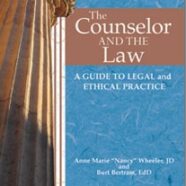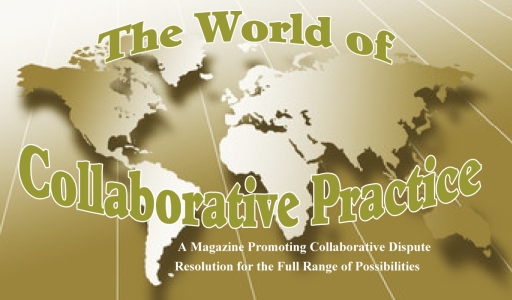
Tags
Related Posts
Share This
The Counselor and the Law: A Guide to Legal and Ethical Practice, Sixth Edition
BOOK REVIEW
If you are a mental health professional engaged in collaborative practice, The Counselor and the Law is a must read. While the legal references relate to the law within the United States, the issues raised are relevant to all mental health professionals around the globe. The more recent issues of telehealth and protection of health care information are addressed with clarity and detail. Most mental health professionals are familiar with and compliant with the HIPAA regulations but did you realize that the more recent HITECH regulations in the United States address the risks of electronic communication, social media contacts, and even the “what is my responsibility if my laptop is stolen”? We live in a world where information moves around the globe in seconds and firewalls can be breached by the teen age geek next door. Updating your knowledge of the risks and your responsibilities is critical.
Have you posted any vacation pictures on-line? That photo of you in a speedo may be erotic stimulation for one of your female clients. Have you now breached your ethical responsibilities with regard to this client? Have you been careful to keep personal items out of your office, but posted your photo as the proud owner of a new boat or motorcycle? Are you Tweeting your political preferences and ideologies? The electronic world is fraught with potential ethical violations and Wheeler and Bertram give clear guidance about navigating these treacherous waters.
Perhaps one of the most treacherous ethical concerns is the dual relationship and just exactly what constitutes a dual relationship. About a month ago, I was consulted by a licensed counselor about this issue. She had been asked to see a child and though she did not know the family personally, they attended the same church and had children of approximately the same age. In a mega-church setting where more than 1,000 people attend a service, she was known by reputation but had never met or crossed paths with this family. What are the chances that seeing this child would establish a dual relationship? As we talked through the possible scenarios and the options available to this family, the counselor became clear that the potential for a dual relationship was great even though she had not had a previous relationship with this family. Perhaps in a small town where the options for mental health services were limited, this request could have been honored and specific boundaries set to avoid the duality. In an urban setting with numerous other service options, the counselor elected to make an excellent referral rather than risk the potential of an ethical violation. In the chapter on Civil Malpractice and Liability, issues such as this one are addressed clearly and succinctly.
Within collaborative practice, the unique role of the mental health professional requires greater familiarity with the law as it applies to professional conduct and malpractice. The teams of legal and mental health professionals present more of a challenge for maintaining boundaries and clarity about the service being provided and the services that are not being provided. In this context, the mental health professional must be careful not to be seen as offering legal advice to the client and over-stepping the bounds of his/her expertise. Chapter 3: Overview of Law and Ethics and Chapter 9: Professional Boundaries both provide clear guidance on how to assess your role and clearly communicate limitations to your client.
The concepts addressed in this book are complicated and the consequences of not knowing can be devastating for the professional. The language and presentation by these authors is clear, concise and well-crafted to guide the professional to a clear understanding of responsibilities and resources. Keep this book handy and use it often.
The Counselor and the Law: A Guide to Legal and Ethical Practice, Sixth Edition, Anne Marie “Nancy” Wheeler, JD and Burt Bertam, EdD, American Counseling Association, www.counseling.org. $52.95, ACA member price-$39.95. Order #72919 800-422-2648 x222 or 703-823-9800 x222 or online here ISBN 978-1-55620-315-2
Also can be ordered from Amazon:











Share your thoughts here and in your network.